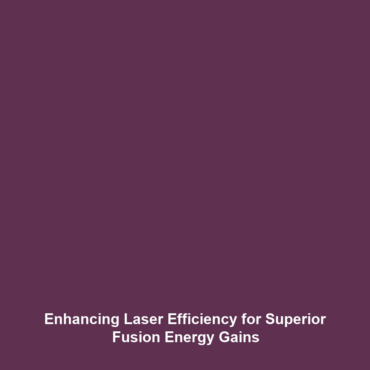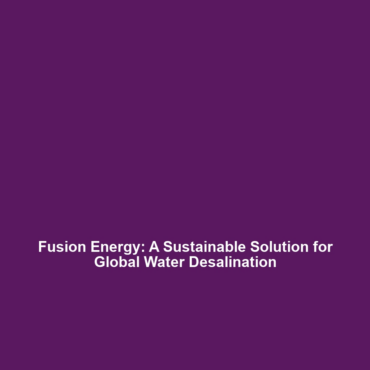Future Goals: Optimizing Laser Efficiency and Improving Energy Gain in Fusion Energy
Introduction
The quest for sustainable energy solutions has ushered in significant advancements in fusion energy, with optimizing laser efficiency and improving energy gain being pivotal goals in this quest. The intricacies of laser technology in fusion processes not only maximize energy output but also pave the way for environmentally friendly energy sources. Understanding how these advancements fit into the broader context of fusion energy will define the future of energy production in the coming decades.
Key Concepts
Understanding Laser Fusion Technology
At the core of future goals in fusion energy is laser fusion technology, which relies on using focused laser beams to initiate nuclear fusion reactions. Optimizing laser efficiency involves enhancing the use of energy required to generate these beams while maximizing their effectiveness in triggering fusion. Key concepts include:
- Photon Energy Efficiency: Improving how much of the laser’s energy converts into usable power during fusion.
- Pulse Duration and Frequency: Adjusting the timing and repetition of laser pulses for optimal energy delivery.
- Target Design: Innovating the physical structures that lasers strike to produce maximum energy gain and minimize losses.
Applications and Real-World Uses
The goals of optimizing laser efficiency and increasing energy gain are critical not only for advancing theoretical models but also for practical implementations. These applications include:
- Energy Production: Innovations in laser technology can lead to more efficient energy production from fusion reactors.
- Medical Applications: By improving laser systems, advancements in fusion research could enhance laser surgeries and therapy.
- Industrial Uses: Cutting-edge laser technologies are also being employed in manufacturing processes, leading to improved precision and energy savings.
Current Challenges
Despite its promising potential, the journey toward optimizing laser efficiency and improving energy gain faces numerous challenges, including:
- High Costs: Developing advanced laser technologies involves significant financial investment.
- Technical Limitations: Current laser systems may not provide sufficient energy output relative to input.
- Material Constraints: The endurance of materials used in laser technology under extreme conditions remains a critical concern.
Future Research and Innovations
Looking ahead, several promising lines of research are set to redefine laser efficiency and energy gain in the realm of fusion energy. Innovations such as:
- Advanced Laser Systems: Next-gen technologies are being developed to create more powerful, compact laser systems.
- AI in Laser Optimization: Artificial intelligence is being leveraged to enhance laser performance and configuration.
- New Fusion Reactor Designs: Innovative designs that require less energy input while optimizing fusion processes are currently under exploration.
Conclusion
In summary, optimizing laser efficiency and improving energy gain are crucial components in the advancement of fusion energy. As we explore these areas, the potential for groundbreaking developments will not only revolutionize energy production but also contribute to a sustainable future. For further reading on related topics, visit our sections on Laser Technology in Energy and Advancements in Fusion Research.

